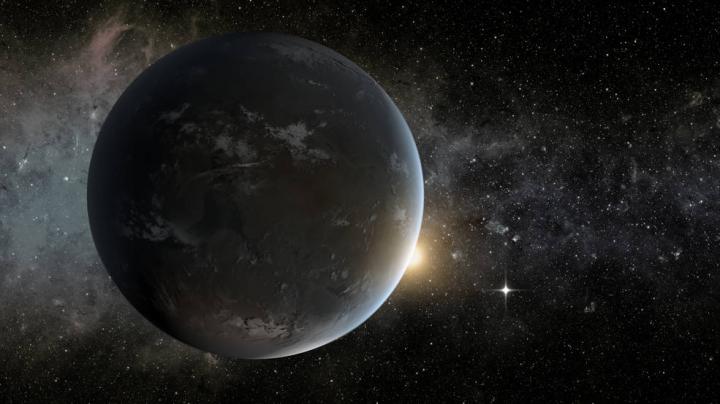Where are we most likely to find signs of extraterrestrial life?
Today, astronomers know that most stars develop a planetary system during the course of their life. It is estimated that the total number of planets exceeds the total number of stars. On average, each star has between one and two planets. With its 200 billion stars, the Milky Way therefore might have around 300 billion planets.
Of course, there is a huge amount of variability in these planets. There are gas giants that rotate on very tight orbits and are almost as hot as their host star. There are icy planets on the distant outskirts of their systems, like Neptune in our Solar System. There are planets that are comparable to Earth. And there are even a large number of cosmic loners traipsing through the loneliness of space without any star at all. How all these systems actually look and whether life might have developed there depends, of course, on the specific circumstances.
Discovering these details, however, is not very easy for astronomers – especially because of the very large distances and the fact that these objects are very faint. Different than stars, planets do not light up themselves! So, if we want to go searching for a specimen that harbors life, it would also be helpful to know the most likely location to look. Naturally it would most likely be in the habitable zone, where liquid water can exist on the planet’s surface.
Astronomers also believe they have found a characteristic in the atmosphere that would signal the presence of life: the simultaneous presence of oxygen and methane. Both gases react with each other very easily and mutually destroy each other. If, however, they both can be detected in the atmosphere of a planet, then that planet must have sources for both gases. On Earth, plants produce oxygen and animals produce methane (unfortunately, because methane is a potent greenhouse gas). Alien astronomers would be able to very easily see from the Earth’s atmosphere that there is life on our planet.
Where are our best chances to successfully detect such a planet? In the habitable zone of spectral class K-type stars, according to a new article by astronomer, Giada Arney. These stars are somewhat smaller, fainter, and redder than the Sun, but not as red as the dwarf stars of spectral class M (for example, Proxima Centauri). Their big advantage: unlike brighter stars like our Sun, K stars produce less UV radiation, which in turn produces less atomic oxygen that can very efficiently destroy methane. K stars also do not have as wild a youth as M stars, during which radiation outbursts could destroy the foundations of life early on.
Life would also have more time to develop on planets in K star systems: their stars will age to be between 17 and 70 billion years old, while the Sun will reach an age of only around 10 billion years. And finally, planets in K star systems will be easier to detect, because they won’t be as overwhelmed by the light from their host star: the Sun is 10 billion times brighter than any of its planets, a K star would be perhaps “only” one billion times brighter.
